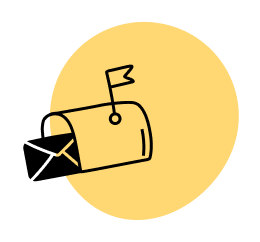A former president of the United States once famously described himself as the “Decider in Chief.” On one level, that’s comical. On another level, it’s instructive, and succinctly so. The person who possesses the most decision-making power is the person who will be judged for the success or failure of those decisions. End of story.
That sounds a lot like a business owner, yeah?
When entrepreneurs are first starting their small businesses, I wager most aren’t thinking of themselves as a “Decider in Chief.” But from day one, they are. That’s the awesome and terrifying reality of working for yourself, a reality that only gets more rollercoaster-like as your business grows. You get to call all the shots. (Yay!) If they work, you’ve earned the glory. (Woohoo!) If they don’t, you’ll risk feeling like a failure. (Gulp.)
How you experience that rollercoaster-like entrepreneurial journey is directly influenced by the quality of your decision making. I actually think of them as one and the same thing: so goes your decision making, so goes your small business. Full stop.
Looking for the least turbulent ride possible as a small business owner? Then work on your decision-making skills. The more intelligent your decisions, the smoother your ride will be. That’s not to say decisions are easy; oftentimes, decisions are quite hard. But assuming you make smart decisions regardless of their difficulty, the tracks those decisions lay ahead of you will provide for a smoother and more successful journey.
There are many ways to develop your decision-making savvy. Experience alone in the wild business world is a good teacher. Experience-based learning, however, can often be reactionary. If you care to complement experience with a proactive counterpart, then invest some brainpower into learning and using a strategic framework.
What Is a Strategic Framework?
Ask someone, “What is strategy?” and you’ll likely receive a dizzying array of responses. Strategy is challenging to pin down in discrete terms because (in most cases) it encompasses a composite of inputs: values, vision, market conditions, competitive advantages, intellectual property, available resources, intended outcome(s), etc.
A framework can help to organize such a fluid concept into focused and actionable terms that lend direction to your decision making. Said differently: a framework is what small businesses owners like you, me, Pat, and others need to harness our ideas into actions.
Here’s one textbook definition of a strategic framework: “a plan of action or policy designed to achieve a major or overall aim.”
The “plan” part of that definition is crucial. Applying a framework produces the plan. Without a framework, you don’t have a plan; instead, you have—at best—a set of loosely connected actions into which you’re investing time, energy, dollars, and other resources. These actions will hopefully, maybe produce desirable results and, thus, are maybe (but not necessarily) strategic in nature.
If that wishy-washy existence makes you squeamish, then you’d do well to adopt a strategic framework.
Frameworks vary. Some are surgical in purpose, like a SWOT analysis. Others are more mindset-oriented, like Blue Ocean. Some are built bottom-up within an organization to enable unified performance, like Objective and Key Results (OKRs). Others strive to enable unified performance from a top-down approach, like Objective, Goals, Strategies, and Metrics (OGSM).
There is no one right framework versus another. Frameworks are tools (a theme I’ll return to later in this article). How you wield a tool usually matters far more than the tool itself and/or in combination with other tools.
I believe in the use of several complementary strategic frameworks. If you’re a nerd like me, think Voltron. The collective is more powerful than any individual component. That said, I also believe in having a central strategic framework that anchors thoughtful decision-making at the business/enterprise-level. It’s the point of origin of all of our intentional actions.
For us at SPI Media, that’s the OGSM framework.
OGSM: the Strategic Framework We Use at SPI Media
I was first exposed to the OGSM framework in my post-graduate leadership development program at Johnson & Johnson. This framework revolutionized how I thought about strategy development. It taught me how to not only nurture strategic ideas but rather, and far more importantly, develop strategic plans that connect vision (i.e., raw ideas turned into directional objectives) with outcomes (i.e., results described as goals) through deliberate actions (i.e., focused strategies).
The OGSM framework comes from the corporate world and isn’t as shiny as other options, like OKRs. That’s just fine with me because whatever it may lack in shininess it makes up for in substance.
Components of the OGSM Framework
I reeducate and reemphasize the OGSM framework every year with my SPI Media team during our annual strategic planning summit. In fact, the slide above comes courtesy of my strategic planning presentation deck. It summarizes the four key components of the model:
Objectives
- A vision-based direction that aims to achieve something big
- Can be quantitative in nature, further quantified by its goals
- Must empower the company’s vision and mission statements as well as its core values
Goals
- Quantifiable results that prove the objective was achieved
- Must have at least one goal per objective; can have multiple goals
- Goals are delegated to others consistent with their roles and responsibilities
Strategies
- Prioritized work to serve in the pursuit of achieving the goals to which it is associated
- Can be a combination of projects (one-time efforts) and/or practices (ongoing work)
- Declared strategies should not be confused for tactics and tasks
Metrics (aka Measures)
- Data points to collect, analyze, and review along the way to effectively govern the work
- Over time, the analyzed metrics should produce trends that suggest positive progress
- Tracking too many metrics is counterproductive; concentrate on the critical few KPIs
This framework provides a high-fidelity way of organizing your decision making at the strategy-level based upon the goals you’re aiming for to achieve an objective. When decision making is refined in this way, it reduces the waste of precious resources (e.g. time, money, energy) and elevates the probability of success. Success, however, is not guaranteed.
Caution: Strategic Frameworks Do Not Guarantee Success
Strategic frameworks—all of them—are tools, nothing more. Like any other tool, success comes not from its innate qualities but how it is used. So don’t make the mistake of believing that the quick adoption of a strategic framework will make all your dreams come true.
Instead, proceed with cautious optimism. Using a strategic framework will feel weird at first. That’s natural, so don’t stop at the awkward feeling. Also don’t stop using it when it fails to deliver upon your goals and objectives, because—frankly—that’s likely the first few times.
The not-so-secret secret to deriving value from a strategic framework is to use the framework repetitively. It’s muscle development, plain and simple, with the “muscle” in this context being your strategic brain—your critical thinking and decision-making abilities. The use of the tool builds and strengthens the muscle. At first, you will be weak. If you remain committed to the work, you will become strong. And from strength comes success.
How to Apply the OGSM Framework in Your Small Business
Start small. Start slow. Revisit frequently. That’s the best, most distilled and effective way to begin applying this framework, or any other, to your small business.
Specifically for the OGSM framework, I advise entrepreneurs to consider the following approach:
- Define your goals.
- Unify those goals into an overarching objective.
- Brainstorm all of the possible strategies you could choose to invest in that may help you achieve those goals and, thus, the objective.
- List out your key operational constraints including time/bandwidth to do work, monetary budgets, availability of other types of resources, relationships that may help, etc.
- Whittle down your strategies list to the critical few that you believe will generate the results you need to accomplish your goals that you can make work within your declared constraints
- Select a shortlist of metrics (1-3) that you’ll track over time as signals of your progress toward achieving your goals and objective.
Why You Should Start with Goals
There are two main reasons to start with goals:
- In my experience, very few entrepreneurs actually know what their goals are. Oh, I’m sure most think they know. But when I talk to small business owners, advise startup founders and CEOs, and generally participate in this spectrum of conversation in entrepreneurial communities, I’m reminded just how rare it is that someone has credibly defined goals in quantitative, rational, and achievable terms. If such high-quality goals don’t exist, then it’s arguable why you should bother developing an organized plan of strategic actions.
- Goals are a good “stage one rocket booster” for strategy development. Engaging at this level of the model first usually goes faster with less friction as compared to starting elsewhere within the model. That positive momentum is the “booster” needed to propel further good work elsewhere within the model.
If you’re new to organizing your decision-making in this way, then destress your work further by narrowing the timespan of your strategic plan to just three or six months. There is no rule that says you must develop a twelve-month annual plan on the first go.
Start Small with Your Chosen Strategic Framework
Remember: success with any strategic framework comes with repetition. So consider building one for the next three months, then execute against that plan, then analyze and evaluate the results. Learn from that experience and apply those learnings into the next three-month strategic plan. And so on and so forth until you’ve developed enough new strength and confidence with this caliber of strategic decision-making that you feel ready to take on a six-month strategic plan.
It’s easy to get lost in the trees and forget to see the forest when you engage in intentional strategy development. So pull back from time to time and revisit why you’re doing this work in the first place: to make smarter decisions that actually lead to the results you want for your small business while smoothing out the ride.
If the process and/or results aren’t to your liking, then chuck the plan you have and start over. You are your own Decider in Chief, after all. Embrace the heck out of that awesome and terrifying power, and you’ll be a-okay.
To learn more about building your business, read my guide, The SPI Beginner’s Guide to Business Fundamentals.
 Matt Gartland
Matt Gartland
 Karen Beattie
Karen Beattie

